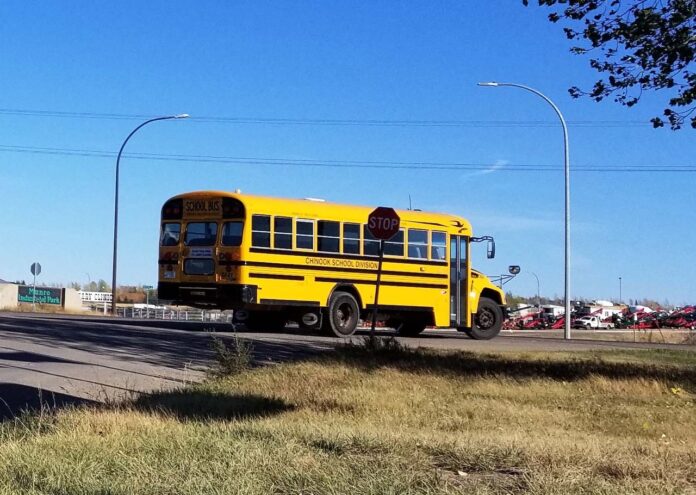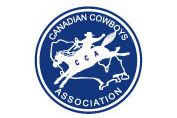By Matthew Liebenberg
The rising prices of new school buses and casual driver recruitment have been key challenges for the Chinook School Division’s transportation department.
Manager of Transportation and Facilities Kevin Jones presented the transportation accountability report for the 2022-23 school year during a regular Chinook Board of Education meeting, Dec. 11.
“The price of buses has really risen the last three to four years,” he said. “The average bus has gone up 40 per cent for us. So it really has an impact on our ability to purchase buses. Another challenge is around our casual drivers for recruiting. There are always areas where we may have a decent amount, but then there’s other areas that we have a real shortage. So when we have a lot of our route drivers off, it’s a real challenge to try to fill the position.”
The Chinook human resources department implemented various initiatives to recruit casual drivers, for example positions are posted on different job search websites, the school division and school websites and in local media. There were local efforts to attract drivers.
“We did 1,200 mailouts in some key areas,” he said. “We have bus driver job fairs that we hold at schools. They’ve proven to be fairly successful in certain locations. And then word of mouth.”
A recent initiative is a $200 recruitment allowance for any staff member who identifies a candidate who submits a successful application. The allowance is paid after a candidate receives the school bus endorsement on their driver’s licence and completes their first casual assignment.
The average length of a rural bus route is 217 kilometres. There are currently 114 rural routes and rural buses drive an average of 24,708 total kilometres a day to transport 1,863 students.
Rural ridership decreased with 136 students or 6.8 per cent since 2013. However, this does not change the expense to operate the rural bus service.
“We still are traveling the same number of miles, because depending on where people live, we still need to get them,” he said. “There’ll just be buses with less kids on them, but still traveling the same number of miles.”
There are currently 36 urban bus routes. The urban buses drive an average of 1,135 total kilometres per day to transport 1,499 students. Urban ridership increased with 396 students or 40 per cent since 2013. Chinook School Division’s joint use busing agreement with Holy Trinity Catholic School Division is the main reason for the growth in urban ridership.
The average age of the Chinook School Division’s spare bus fleet is 11.8 years, which is older than the recommended target of 11 years. The average age of the entire bus fleet is 8.1 years and the average age of the route fleet is six years.
The school division has been implementing a right-sizing initiative for several years to make the operation of the bus fleet more cost effective. The smallest bus will now have a carrying capacity of 29 passengers instead of 35 and there are fewer 53-passenger buses. The smaller buses have a lower purchase cost and are cheaper to operate and maintain.
“We’ve been doing our right-sizing initiative for around seven years with purchasing the smaller buses,” he said. “So we’ve gone from 60 per cent larger buses and 40 per cent smaller to now we’ve flipped it. We’re at about 60 per cent 29-passenger buses out on the rural and about 35 or 40 per cent of the larger buses.”
However, the school division still faces the challenge of rising bus prices. For example, the cost to purchase a 29-passenger bus increased from $58,000 in 2013 to a current price of $107,000.
The transportation department has been implementing new measures to increase the lifespan of buses, but that comes at a cost. The amount spent on bus repair and maintenance in 2022-23 increased about $280,000 to $$1,286,000.
“That alludes to the mechanics doing extra stuff on buses to get longevity out of the fleet as new bus purchases have become more expensive,” he said.
They have been rebuilding engines and transmissions to keep the vehicles going a bit longer. However, there is a limit to what they can do, because the gravel roads on rural routes take a toll on the undercarriage and chassis of a bus.
The price of vehicle parts increased by 25 to 30 per cent, but it is still cost effective to keep a bus going longer to delay the expense of replacing it.
The transportation department has implemented other cost saving measures. It purchased a tire changer for the Swift Current garage, which means mechanics can do tire changes themselves. Any windshield replacements are done with local vendors and with glass purchased locally. Oil and fluids are purchased in bulk, and all purchases are done at the lowest available prices.
“All the mechanics are very in tune with saving every penny that we can in all areas,” he said. “So it’s bulk purchasing and then what is it we can do in-house.”
Trustees approved a motion at the Chinook board meeting on Dec. 11 for the purchase of 10 new 29-passenger buses at a cost of $1,075,000 plus applicable taxes.
The school division received responses from three companies and the tender was awarded to Warner Bus Industries. Production of the buses will start in January and they should be ready for delivery by March 2024.






